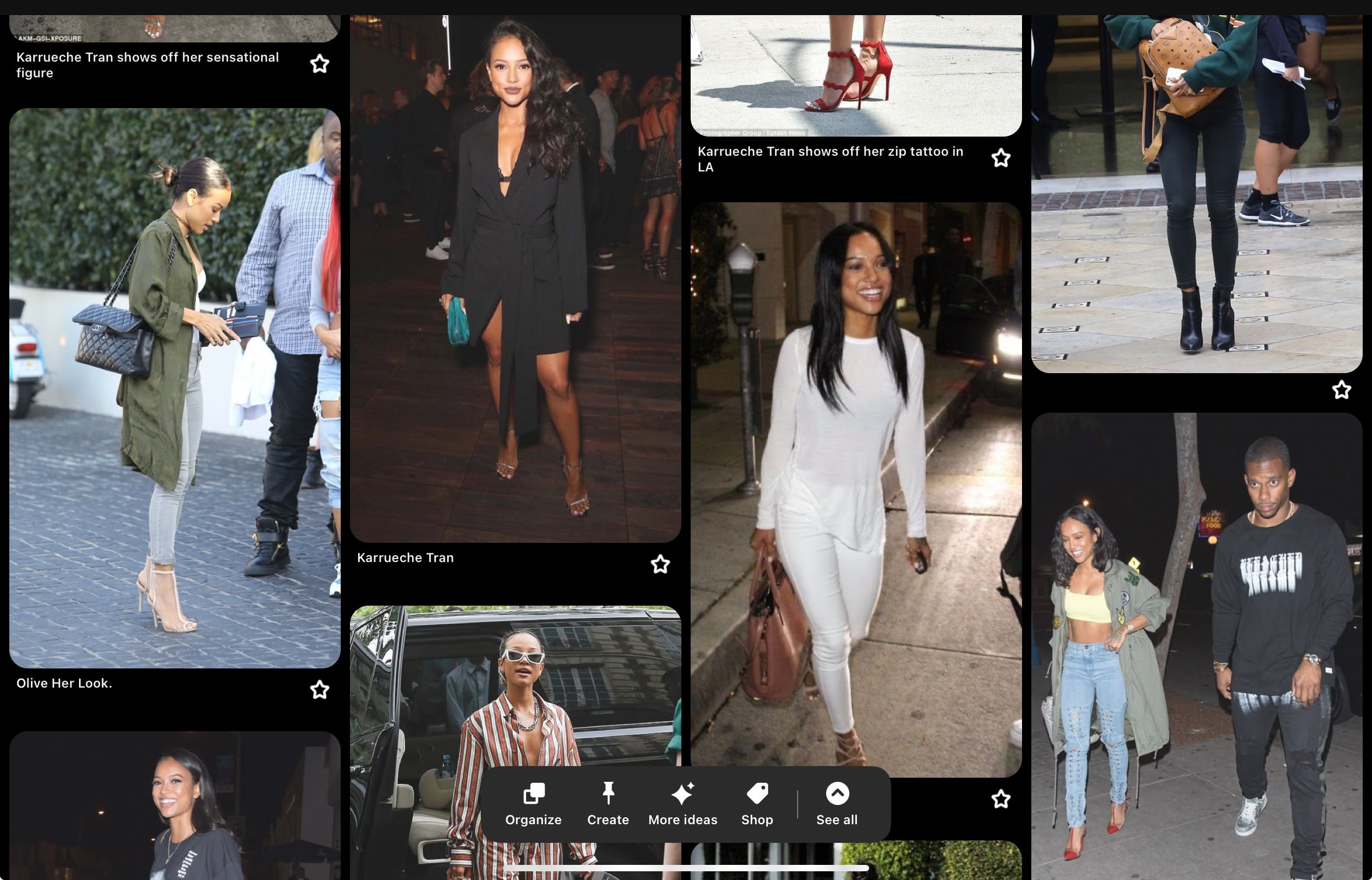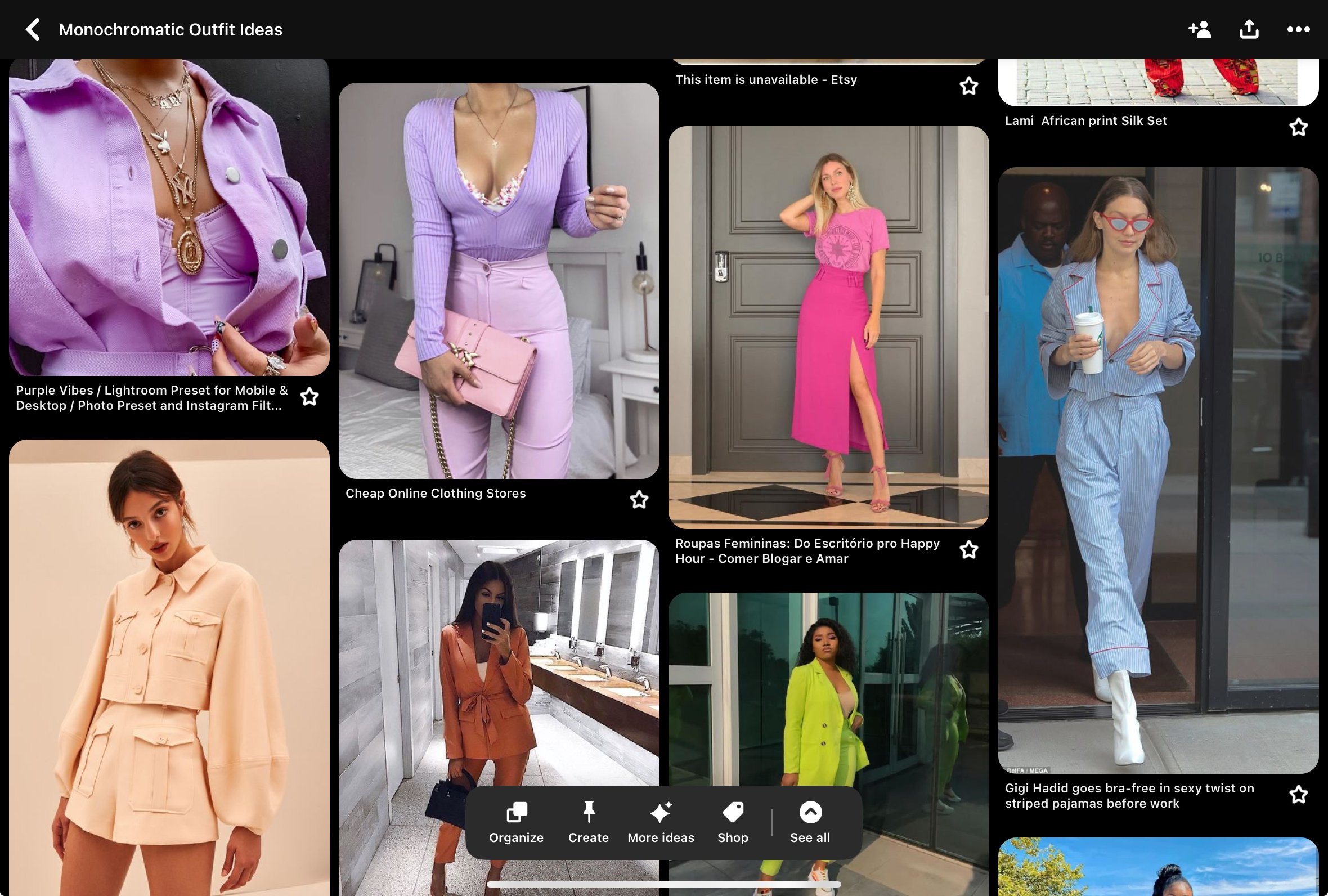Why Your 30s Are the Perfect Time for a Capsule Wardrobe
When I hit my 30s, it felt like my wardrobe was stuck in a time warp. Every closet dive was a reminder of who I used to be—someone with way too many graphic tees and not nearly enough pieces that fit my actual life. I was now a mom of two, running my own business, and trying to keep up with the everyday hustle. The last thing I needed was to waste time sifting through clothes that didn’t match my current vibe.
Instead of spending 20 minutes searching through 30 nearly identical t-shirts, I wanted to simplify. I craved the ease of knowing that a simple bodysuit, a matching set, or a well-loved pair of jeans could do the job without the fuss. I stopped looking to Pinterest for all of my style inspiration and started finding it in real life—from rewatching old movies to just paying attention to what worked in my everyday life in Chicago. (Check out my list of 80s fashion movies that continue to inspire my style.)
That’s when I started building a capsule wardrobe. Not the kind that tells you to own just 10 items or stick to a strict color palette. I wanted a closet full of pieces that made getting dressed feel effortless. Think fewer, better options—where every piece had a purpose, and every outfit felt like it just worked. (If you're new to the concept, here's a simple guide on how to build a capsule wardrobe and why it might be a game-changer for you.)
I also took a hard look at my personal style, which had evolved since my 20s. Instead of following trends, I started exploring different types of fashion styles and figuring out what genuinely resonated with me. If you’re still on the hunt for your style identity, this guide on how to find your personal style might help.
If you’re in a similar boat—whether you’re balancing work, kids, or just trying to make mornings a little less hectic—creating a capsule wardrobe in your 30s might be exactly what you need. In this guide, I’m sharing the real, practical steps to make it happen—without forcing you into a minimalist box or losing your personal style along the way.
Ready to clear out the closet clutter and build a wardrobe that actually makes sense for your life? Let’s get started!
What is a Capsule Wardrobe? (And Why You Need One in Your 30s)
A capsule wardrobe is all about simplicity and intention. At its core, it means curating a closet filled with fewer but better pieces that mix, match, and truly work for your lifestyle. Instead of overflowing drawers of "just okay" clothes, a capsule wardrobe focuses on those tried-and-true favorites you actually enjoy wearing.
Your 30s often come with a shift—not just in your personal style but in your entire lifestyle. Maybe you're navigating a more demanding career, chasing toddlers around the house, or embracing a bit more of that "grown-up" social life (hello, dinner parties and fewer late-night club crawls). With so much going on, the last thing you need is a closet that feels chaotic.
That's where a capsule wardrobe shines. It streamlines your choices, making getting dressed in the morning a little less of a hassle. Instead of wondering, "What should I wear?" you’ll have go-to pieces that make you feel put-together and ready for whatever the day throws at you.
In your 20s, fast fashion might have been the thrill—a $10 top here, an impulse-buy dress there. But in your 30s, there's a natural shift toward quality over quantity. It's about investing in timeless items that not only last but also make you feel like the best version of yourself. Whether it's a classic trench coat, a perfectly tailored blazer, or a pair of jeans that fit just right, these pieces aren't just clothes—they're confidence boosters.
If you're ready to dive deeper into building a wardrobe that works for you, check out our guide onhow to rebuild your wardrobe on a budget for practical, affordable tips.
The Wardrobe Pyramid: Building a Solid Foundation
When I first started building my capsule wardrobe, I kept falling into the same trap: too many trendy pieces, not enough basics. My closet was a mishmash of bold prints and statement items, but when it came time to get dressed, I had nothing to wear. That’s when I discovered the wardrobe pyramid—a simple visual guide that helped me balance my closet and, honestly, my sanity.
The Base: Everyday Basics (60%)
These are your workhorses—the pieces you reach for day in and day out. Think simple bodysuits, matching sets, classic tees, and quality denim. These basics form the foundation of your wardrobe because they can be mixed and matched effortlessly. When your basics are on point, getting dressed in the morning becomes a breeze.
Trendy or Seasonal (10%)
Add a little spice with fun, on-trend items that refresh your look.
Versatile Statements (30%)
Pieces like a sleek blazer or denim jacket that elevate your basics.
Everyday Basics (60%)
Core items (tees, denim, bodysuits) that form the foundation of every outfit.
The Middle: Versatile Statement Pieces (30%)
This is where the magic happens. Versatile statement pieces are those items that add personality to your basics without overpowering them. These pieces should still be practical and easy to style but with a little more flair. A great blazer, a structured denim jacket, or tailored trousers fall into this category.
The goal is to find pieces that can go from day to night or from work to weekend with just a few tweaks. When I added a black blazer and a denim jacket with pearl detailing to my wardrobe, it felt like I’d gained 10 new outfits without buying anything extra.
The Top: Trendy or Seasonal Items (10%)
While a capsule wardrobe is all about timelessness, that doesn’t mean you can’t have fun with trends. The top of the wardrobe pyramid is reserved for those pieces that bring a fresh twist to your style. These are often seasonal items, statement bags, bold jewelry, or shoes that can elevate a look.
I’ve found that limiting myself to 10% trendy items keeps my closet feeling fresh without becoming overwhelmed by fast fashion. It’s about adding a little spice without drowning in it.
Pro Tip: “If 60% of your closet is basics, 30% versatile pieces, and 10% trendy items, you'll always have something to wear.”
Analyze Your Lifestyle: The Style Pie Chart
When it comes to building a capsule wardrobe, knowing your lifestyle is just as important as knowing your style. A wardrobe filled with gorgeous blazers and tailored pants won’t do much good if you spend most of your days working from home or chasing after kids. That’s where the Style Pie Chart comes in—it’s a simple, visual way to break down your lifestyle and guide your wardrobe choices.
How to Create Your Style Pie Chart
Track Your Week: Spend a week jotting down what you do each day. Are you heading to the office, running errands, attending events, or lounging at home?
Categorize Your Activities: Group your activities into categories like:
Work: Office days, meetings, client visits.
Casual: Errands, brunch, school drop-offs.
Events: Dinners, parties, social gatherings.
Lounging: At-home days, cozy weekends, self-care moments.
Activewear: Gym, yoga, or walks in the park.
Create Your Pie Chart: Based on your week, assign percentages to each category.
Match Your Wardrobe to Your Pie Chart: If your pie chart shows 50% workwear, 30% casual, and 20% activewear, your capsule wardrobe should reflect that balance. Focus on having enough pieces for each category without overloading any one section.
Create a Mood Board: Let’s Get Visual
When building a capsule wardrobe, a mood board is like your style GPS—it helps you stay on course and avoid detours into "I don't know what to wear" territory. Go deeper than just about pretty pictures; and capture colors, styles, and overall vibe that truly resonate with you.
How to Make It Personal
For me, my mood board started as a mix of Pinterest pins, old magazine clippings, and random photos from movies I love. I’m all about blending classic silhouettes with a touch of vintage inspiration, so my board features everything from crisp white button-downs to 80s-inspired denim jackets (inspired by my favorite 80s fashion movies).
You might be different—maybe your board is filled with targeted aesthetics etc. That’s the beauty of it. Your mood board should reflect your personality, your lifestyle, and, of course, your goals for your capsule wardrobe.
Step-by-Step: How to Create Your Own Mood Board
Choose Your Medium:
Digital: Pinterest, Canva, or even a private Instagram folder.
Physical: Grab some old magazines, scissors, and a glue stick—it’s therapeutic!
Gather Inspiration:
Look for outfits that make you feel excited.
Save photos of pieces you already own and love.
Include lifestyle images that match your vibe (e.g., city streets, cozy home scenes, travel spots).
Identify Patterns:
What colors keep popping up?
Are there specific silhouettes you’re drawn to?
Do you notice a preference for certain fabrics or textures?
Refine Your Board:
Remove anything that doesn’t truly feel like “you.”
Focus on a cohesive look that aligns with your Style Pie Chart and Wardrobe Pyramid.
Keep It Handy:
Save your board to your phone or hang it in your closet.
Use it as a filter for future purchases—if it doesn’t match the mood board, it probably won’t get worn.
Related Reads:
Wardrobe Gaps: How to Identify and Fill Them
If you've ever stood in front of a packed closet and thought, "I have nothing to wear," you're likely dealing with wardrobe gaps. These are those missing pieces that could pull your outfits together and make getting dressed feel effortless.
How to Spot Wardrobe Gaps
A great place to start is by referring back to our Lifestyle Pie Chart. If your chart shows you spend 50% of your time at work, but your closet is filled with casual wear, that's a clear gap. Similarly, the Wardrobe Pyramid can help you identify if you have an imbalance—like an overload of trendy pieces but not enough basics or versatile staples.
Ask Yourself These Questions:
Are there specific occasions (work, weekends, events) where I struggle to find an outfit?
Do I often wish I had a certain type of clothing when getting dressed?
Are there pieces I own but never wear because nothing pairs well with them?
Filling the Gaps Without Overbuying
Instead of running out to buy everything at once, start with intention. Make a list of the items you need most—whether it's a great pair of jeans, a versatile blazer, or everyday basics. When shopping, ask yourself, "Will this work with at least three pieces I already own?" The key is to find items that complete your wardrobe, not just add to it.
And remember, it’s not always about buying new. Sometimes, it’s about reimagining what you already have—like layering a dress over pants or mixing textures to create fresh looks.
Creating a Color Palette for Your Capsule Wardrobe
Why a Color Palette Matters:
A thoughtful color palette makes mixing and matching your clothes a breeze. It helps ensure that nearly everything in your wardrobe works together, reducing decision fatigue and maximizing outfit options.
How to Create Your Color Palette:
Choose Your Neutrals: These are your wardrobe’s base colors—think black, white, gray, beige, or navy. These should make up about 60% of your wardrobe.
Pick Accent Colors: Add a bit of personality with 2-3 accent colors. These are great for tops, accessories, and statement pieces. Aim for 30% of your wardrobe.
Seasonal or Fun Pops: Keep 10% of your wardrobe for those trendy or seasonal colors. This keeps your capsule wardrobe fresh and interesting without overdoing it.
Pro Tip: Build your palette around colors you naturally gravitate towards and what complements your skin tone. If you’re unsure, take a look at our article on Why You Should Consider Creating a Seasonal Color Palette.
My Capsule Wardrobe in Real Life
Let’s get real—having a capsule wardrobe isn't just about looking polished; it's about making life easier. I’m sharing my actual work and everyday capsule wardrobes to show how a few key pieces can take the stress out of getting dressed.
1. My Work Capsule Wardrobe
When it comes to work, I need outfits that are quick and easy but still make me feel put-together. My go-to pieces include a white button-down, tailored trousers, and a mix of ankle boots and loafers. I can mix and match these pieces for everything from back-to-back meetings to a quick lunch out. It’s all about getting dressed without overthinking it.
2. My Everyday Capsule Wardrobe
My everyday wardrobe is all about comfort without sacrificing style. I rely on bodysuits, relaxed jeans, cozy cardigans, and sneakers for those days when I’m running around but still want to look like I put in some effort. Whether I’m working from home, heading to a casual lunch, or chasing after the kids, these pieces make it easy to get ready and go.
FAQ: Your Capsule Wardrobe Questions Answered
-
You don’t need to splurge to build a capsule wardrobe. Start by shopping your own closet—pull out the basics you already love and wear often. Then, make a list of what’s missing. Prioritize versatile pieces that can be mixed and matched, and shop secondhand or look for sales to fill in the gaps. Need more tips? Check out our guide on How to Rebuild Your Wardrobe on a Budget.
-
A capsule wardrobe for your 30s should focus on pieces that match your lifestyle. Think bodysuits, tailored trousers, a classic denim jacket, and a mix of comfortable and polished shoes. It’s less about having specific items and more about choosing clothes that make sense for your everyday needs. Our article on 30 Wardrobe Essentials Every Woman in Her 30s Should Own can give you a solid starting point.
-
Absolutely! Before buying anything new, take stock of your current wardrobe. Sort your clothes into categories—keep, donate, or sell—and build your capsule wardrobe from what you already love. You might be surprised by how many versatile pieces you already own.
-
The secret is to keep your capsule wardrobe fresh by adding in seasonal or trendy pieces. You don’t need to overhaul your wardrobe every season—just a few accessories or a statement item can make a big difference. Try mixing up your outfits with different shoes, bags, or layering pieces to keep things interesting.
-
A capsule wardrobe should evolve with you. When life changes, take a step back and re-evaluate your wardrobe needs. Swap out pieces that no longer serve you and replace them with ones that do. Whether it’s adding more workwear, investing in comfortable mom-friendly pieces, or finding clothes that fit your new size, your capsule wardrobe should be flexible enough to adapt.





